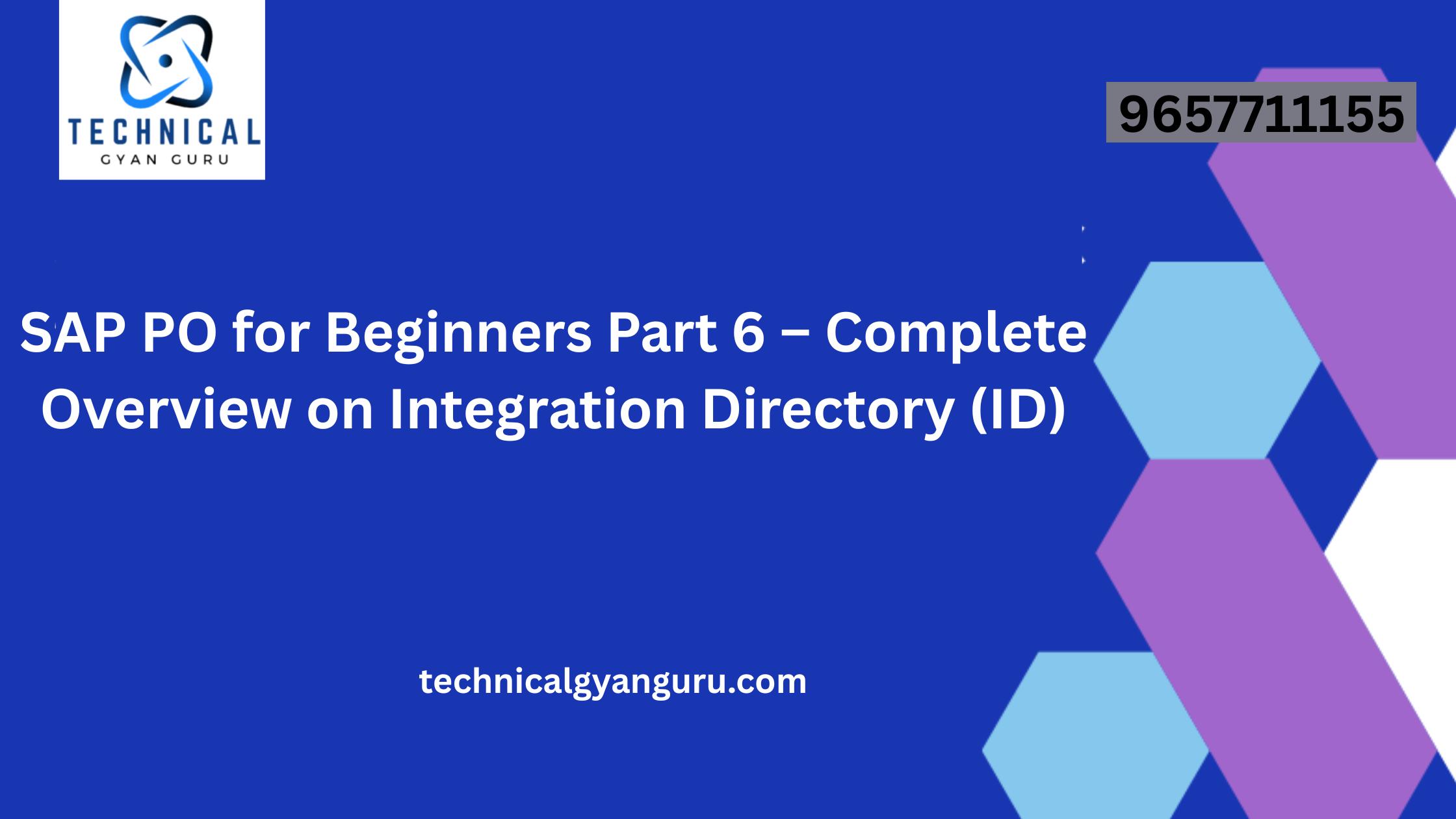
Definition :
SAP Business Technology Platform is an innovation platform optimized for SAP applications in the cloud. SAP Business Technology Platform (SAP BTP) brings together application development and automation, data and analytics, integration, and AI capabilities in one unified environment.
SAP Business Technology Platform is an innovation platform optimised for SAP applications in the cloud.
SAP Business Technology Platform (SAP BTP) brings together application development and automation, data and analytics, integration, and AI capabilities in one unified environment. Create personalised experiences across business processes, build applications, analytics, and integrations faster, and run mission-critical innovation confidently on major cloud providers’ infrastructure fully managed by SAP.
Developers have what they need to quickly connect, extend, and enrich mission-critical business processes. Business users can automate tasks, create fast, flexible workflows and personalised interfaces – all using low-code principles and solutions. From within finance to sales, collaborating on planning, integrating SAP and third-party applications, and sharing insights across the business become easier with instant access to business-context-rich information from your SAP and third-party systems.
What is SAP Business Technology Platform (BTP) ?
SAP Business Technology Platform (BTP) is a platform that provides foundational, platform services and capabilities to build, extend and run intelligent business applications by harnessing the power of data and artificial intelligence.
At the same time, with support for flexible deployment on-premises or in the cloud, SAP BTP provides a comprehensive service that allows businesses to quickly build, deploy and manage innovative applications across a wide range of industries.
SAP Business Technology Platform Pillars
SAP BTP basically has four pillars, which are database and data management, analytics, application development and integration, smart technologies, process automation, and corporate collaboration. Let’s examine these pillars briefly:
- Database and Data Management
It goes through the processes of storing, processing, integrating and interpreting all data belonging to organizations. In this way, it enables organizations to manage data about their services and products flexibly and efficiently, enabling them to make data-based decisions.
- Analytics
This pillar provides evaluation of data along with analytical solutions. In this way, it enables organizations to make fast and insight-oriented decisions and plan. It also helps identify key factors behind performance indicators by automatically detecting abnormal conditions.
- Application Development and Integration
Organizations need agile business process innovation, extension and seamless integration in cloud and hybrid scenarios. This pillar offers organizations the opportunity to easily integrate different systems, improve existing applications and create new solutions for business needs.
- Intelligent Technologies
Intelligent technologies include solutions such as intelligent robotic process automation, machine learning, blockchain, and the Internet of Things. It helps organizations optimize word processing.
What are the Benefits of Using SAP Business Technology Platform?
Fast Integration
- SAP Business Technology Platform brings together application development, database and data management, analytics, smart technologies, artificial intelligence and application development capabilities in a single platform. This helps organizations build applications, analytics, and integrations faster.
- It enables cloud-based applications, on-premises applications and all processes to be seamlessly connected to the infrastructure of the system to provide a real-time view on all devices.
Intelligent Technologies
- It enables organizations to leverage prebuilt integrations, workflows, data models, artificial intelligence services, and APIs across multiple application domains designed specifically for their line of business and industry.
- It offers the fastest and most efficient way to transform enterprise data into business value.
Efficient Processes
- Powerful technologies such as artificial intelligence and machine learning help organizations use advanced analytics solutions and accurately predict future developments. In this way, it contributes to making more accurate business decisions.
- Thanks to the innovative technologies and applications offered by the platform, all processes and workflows of organizations work more efficiently and effectively. Automated solutions complete all repetitive tasks, reducing the workload.
What is Cloud Integration ?
Cloud integration is the process of bringing data from different sources together to enhance enterprise modernization. Across modern enterprises, companies are embracing new systems. This is changing their data and the way they are using it. Common data sources found in today’s enterprises include applications, on-premises systems and cloud services such as:
- Data access from different devices anywhere, anytime
- Data views that are unified, standard and cohesive
- Data operations that are agile and efficient
Types of Cloud Integration
Enterprises focus on both cloud data and cloud applications when applying cloud integration. They are equally important given the rapid growth of data and applications.
With cloud data integration you bring together data from different sources. You create cloud data in the cloud or you migrate it there. You may also find it only in the cloud. But data integration can also combine cloud data with on-premises data. On-premises data may exist on legacy servers or mainframe systems.
Extract, load, transform (ELT) is a three-step data cloud data integration process. ELT extracts, loads and transforms data from one or more sources into a repository. ELT combines and synthesizes raw data from multiple data sources. Data migrations and cloud data integrations are common ELT use cases. Cloud data repositories can include a cloud data warehouse or data lake. Cloud data integration also gives you the ability to:
- Batch process large volumes of data
- Cleanse data so it’s ready for analysis
- Apply data quality measures
- Protect and mask data to keep it secure
With cloud application integration you connect software applications across your enterprise. When applications can communicate and interact, this enables new cloud computing and business processes. Cloud application integration gives you the ability to:
- Discover, connect, access and use your data in real time
- Improve workflows • Modernize your infrastructure
- Build models based on data insights
- Write programs for AI and machine learning to predict future behavior
Benefits of Cloud Integration
You can propel your business forward with cloud integration in many new ways. Here are the top seven benefits:
Break down data silos
Cloud integration seamlessly brings together the data that helps businesses run – from sales and operations to strategy and financial planning. Communication is easier and workflows are smoother. You can deliver goods and services more efficiently and better predict and fulfill the needs of your customers.
Enable business agility
Because cloud integration allows you to work with different data formats across different data systems, you can launch new services, products and applications faster. And you can more quickly respond to changing market environments and business opportunities to stay competitive.
Boost connectivity
Cloud integration unites and synchronizes your applications. Your information stays readily available anytime with application programming interface (API) calls.
Save time and money
With cloud integration, you can combine data and applications quickly and easily with automation without the need for costly handwritten code.
Operate at scale
Scalability is key to processing particularly large amounts of enterprise data. Standby cloud applications can quickly process and integrate data at scale on the order of petabytes.
Improve data quality and accuracy
During the data integration process, the data is cleaned and prepped before it is stored in a data warehouse.
Power data analytics
Cloud data integration brings all your data together in a highly accessible ecosystem. Data is cleaned and is ready for analysis. You can easily apply artificial intelligence (AI) and machine learning (ML) on demand.
Learn more about the cloud integration leaders in the software development industry.
Cloud Integration Use Cases
The process of cloud integration is similar across industries. But the main use cases vary. Here’s a snapshot of some of them:
Healthcare
Data silos can impact patient care. Cloud integration enables interoperability and patient-first care. It does this by strengthening provider communication. It also opens up patient access to health records and applications aimed at improving health outcomes.
Manufacturing
Cloud integration helps companies manage product quality. It can integrate data across engineering systems, parts, assemblies, supply chains and shipping.
Financial Services
Banks integrate checking, savings, mortgage, credit card and call center data. Customers get a unified service experience. It helps employees predict a customer’s financial needs to cross-sell or upsell other offerings.
Public Sector: Government
State and local governments use cloud integration to provide online services. Organizations from police departments to departments of motor vehicles (DMV) benefit from cloud integration. Some cloud integration services include:
- Vehicle registration renewal
- Home remodel permitting
- Voter registration
- Federal taxing
- Security assurance
Public Sector: Health
Cloud integration is essential for gathering massive amounts of data. Use cases that depend on high volumes of data include evaluating health risk factors and the impact of viruses like Covid-19. Cloud integration is also critical when vaccine developers need to expedite the production and delivery of vaccines. The same is true of researchers when they need to effectively recruit research subjects and track them through clinical trials.
Remote staff
The pandemic forced many companies to conduct business entirely or mainly online. Rather than build their own data centers, companies quickly turned to the cloud and cloud integration for smooth day-to-day operations.
Steps to Implement SAP BTP
Planning and Assessment
Successful implementation begins with thorough planning and assessment. Businesses must evaluate their existing systems, identify goals, and define key performance indicators. This strategic approach lays the foundation for a smooth integration process.
Training and Skill Development
Ensuring that the workforce is well-versed in SAP Business Technology Platform is vital for maximizing its benefits. Offering comprehensive training programs and fostering skill development ensures that employees can harness the full potential of the platform.
Success Stories and Testimonials
Feedback from Businesses
Real feedback from businesses that have implemented SAP Business Technology Platform provides valuable insights. These success stories showcase the tangible benefits, such as increased efficiency, improved decision-making, and enhanced competitiveness.
Achievements and Milestones
Highlighting the achievements and milestones of businesses using SAP Business Technology Platform reinforces its credibility. Whether it’s achieving operational excellence or unlocking new revenue streams, these success stories inspire confidence in the platform.
Conclusion
In conclusion, SAP Business Technology Platform (BTP) emerges as a transformative force in the realm of business technology. With its diverse services, scalability, and forward-looking features, it empowers businesses to thrive in an increasingly digital landscape. The integration of AI, machine learning, and IoT positions SAP Business Technology Platform as a future-ready solution, ensuring that businesses stay at the forefront of technological innovation.
As industries evolve and face new challenges, SAP Business Technology Platform adaptability and user-friendly interfaces become invaluable assets. Navigating through complex business processes and handling burstiness in data are met with seamless solutions, making it a versatile platform for businesses of all sizes.
FAQs
What industries benefit most from SAP BTP?
SAP BTP caters to a wide range of industries, including finance, healthcare, manufacturing, and more. Its versatility allows businesses in various sectors to leverage its services for enhanced efficiency and competitiveness.
How does SAP BTP ensure data security?
SAP BTP prioritizes data security through robust features such as encryption, access controls, and regular security updates. These measures are in place to safeguard sensitive business information and ensure compliance with data protection standards.
Can SAP BTP integrate with existing business systems?
Yes, SAP BTP is designed for seamless integration with existing business systems. Whether it’s ERP solutions or legacy applications, the platform offers compatibility, making the transition smoother for businesses.
What sets SAP BTP apart from other platforms?
SAP BTP distinguishes itself through its comprehensive range of services, adaptability to industry-specific needs, and integration of cutting-edge technologies. Its user-friendly interfaces and commitment to security contribute to its standing as a leading business technology platform.
Are there any size limitations for businesses using SAP BTP?
No, SAP BTP caters to businesses of all sizes. Its scalability ensures that startups and enterprises alike can benefit from its services without concerns about size limitations.







